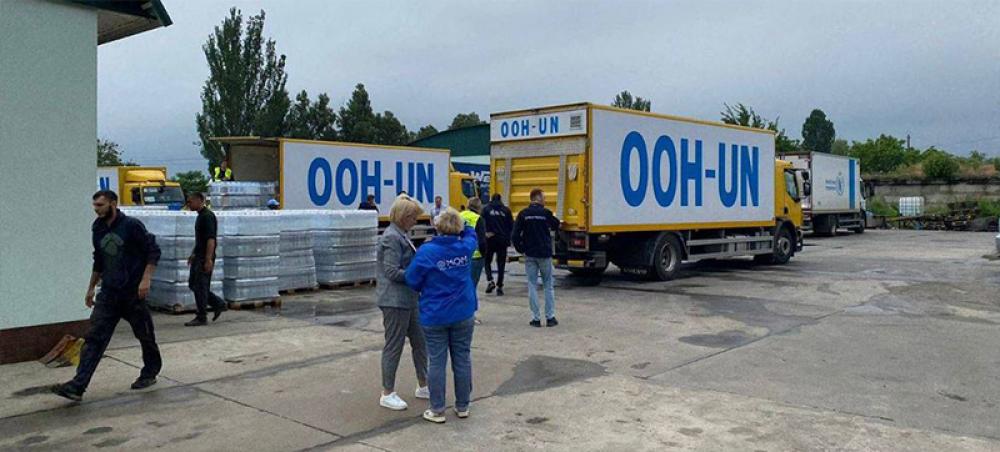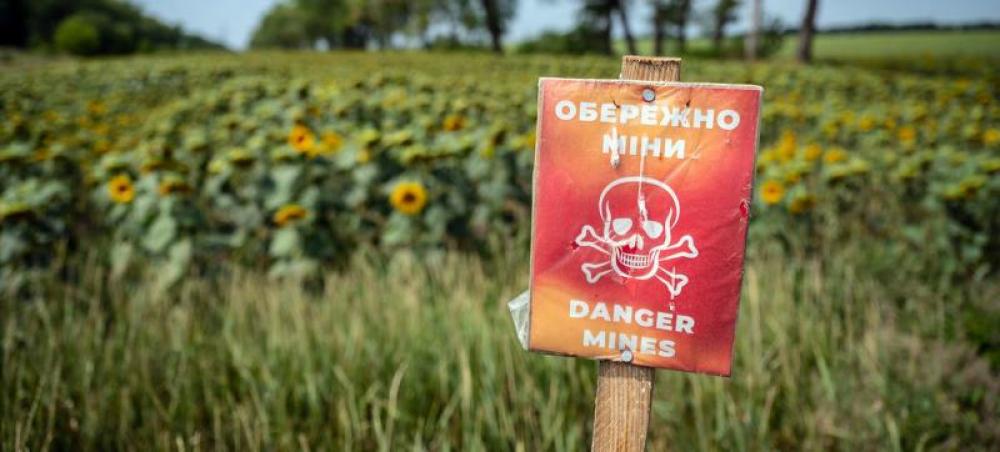Just Earth News | @justearthnews | 17 Jun 2023, 04:40 am Print
 Ukraine
Ukraine Image: UNICEF Ukraine
New York: UN humanitarians continue bringing life-saving aid to survivors of the flooding from the Kakhovka Dam, but they’ve warned that hundreds of thousands more people in the country’s south face severe water shortages.
On Friday, relief supplies were delivered to vulnerable families in the rural Kherson region close to the front line.
The destruction of the dam on 6 June has impacted water supplies, sanitation and sewage systems, in addition to health services.
Boat deliveries
As part of the aid effort, the UN Children’s Fund (UNICEF) and UN World Food Programme (WFP) transported live-saving water and food to families by boat, only 15 kilometres from the contact line.
“We are using today four boats to deliver assistance to these 500 families, a small community that is here close by where I am now”, said Saviano Abreu, head of communications for UN aid coordination office OCHA, in Ukraine.
“These communities, they already have been facing the consequences of the war. This area was under Russian control. Late last year around November, it was retaken by Ukraine and now, they are now facing this new catastrophe with the flooding here.”
Cut off from drinking water
The emptying of Kakhovka Reservoir has left tens of thousands of people in southern Ukraine without access to piped water, mainly in the Dnipro region.
The reservoir – one of the largest in Europe - is reportedly 70 per cent empty, according to Ukrainian authorities. The width of the reservoir has also decreased from three kilometres to one, while the water level is now at around seven meters, well below the 12-metre operational threshold, OCHA reported.
“Our calculation is that 200,000 people in the Dnipro region, for example, have already been cut off from the water from their houses,” said Mr. Abreu.
But that could rise to affect more than 700,000 people as the reservoir is the only source for that whole part of southern Ukraine, not just the Kherson region, he warned.
Large urban areas in the Dnipro region, including Pokrovska, Nikopolska and Marhanetska, are completely cut off from centralized water and others like Apostolivska and Zelenodolska have extremely limited access.
Deadly mine displacement
The receding floodwater has also created other deadly challenges in the form of landmines that have been scattered far and wide.
“This area, I think it is one of the most mine contaminated parts of the world,” said Mr Saviano. “It is the reason, why for example, agriculture in Kherson, in Mykolaiv, Zaporizhzhia have been impacted because of the mine contamination, so the floodwater is moving the mines, that is a reality.”
Abigail Hartley, Chief of Policy, Advocacy and Donor Relations section from the UN Mine Action Service (UNMAS) added that “when the water subsides the mines are there.
“(The) good thing is that mines float, so they do stay on the surface. But, of course, there's a lot of other flood debris and they can get buried in sediment. So, it is a challenge”.
She said Ukrainian authorities had done “a good job of de-mining so far”.
Since the destruction of Kakhovka dam, OCHA and humanitarian partners have continued life-saving operations. At least 10 inter-agency convoys have reached those in need.
- Fire at Hindu teacher’s home rekindles concerns over minority attacks in Bangladesh
- UK MP Bob Blackman raises alarm over rising attacks on Hindus in Bangladesh
- Winter without gas: Hazara women stage sit-in outside SGC office in Pakistan
- Bangladesh: Hindu Awami League leader’s death in jail sparks outrage, family blames authorities
- Who is Ubaidullah Ahmadi? Afghan journalist detained in Pakistan





-1763561110.jpg)
